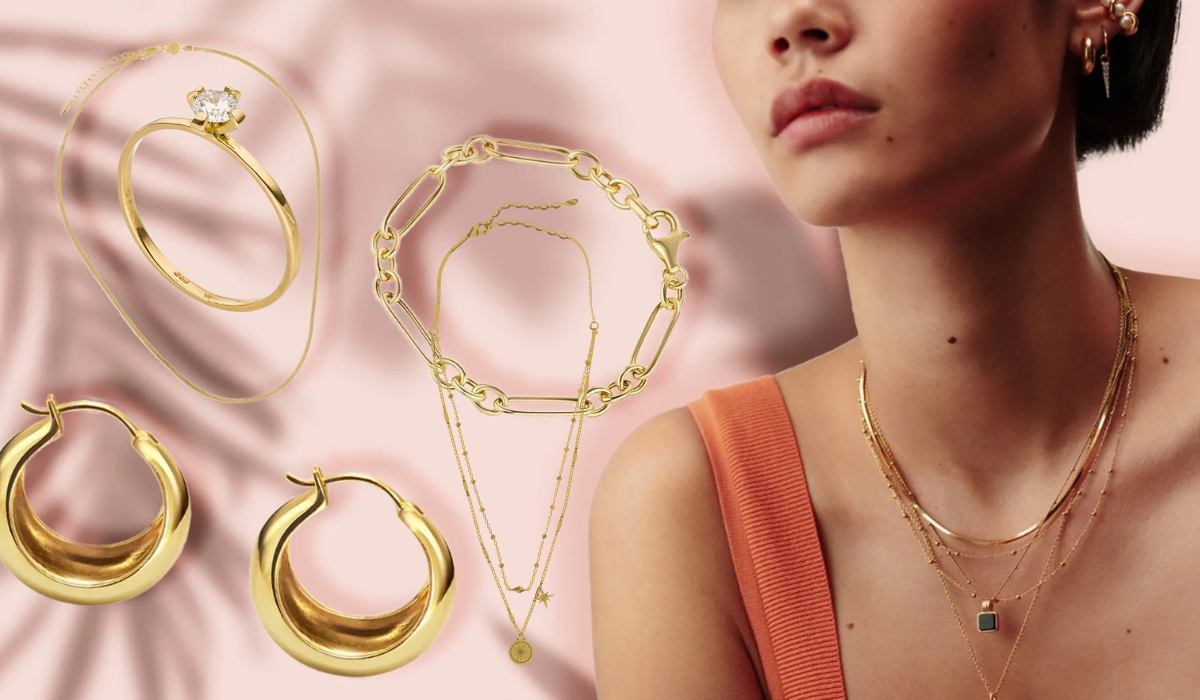In a world often guided by the minimalist mantra of “less is more,” a bold and vibrant counter-movement thrives: maximalism. Nowhere is this philosophy more visibly and personally expressed than in the realm of jewelry. Maximalist jewelry is not merely an accessory; it is a declaration of identity, a wearable canvas for personal narrative, and a celebration of unapologetic abundance. Rejecting subtlety in favor of statement, this style embraces volume, color, texture, and history to create pieces that are impossible to ignore.
This article delves into the defining characteristics, historical roots, and cultural significance of maximalist jewelry, offering a guide to understanding and appreciating this audacious art form.
Defining the Maximalist Ethos: Beyond “Big and Bold”
While size is certainly a factor, maximalist jewelry is defined by a combination of principles rather than a single attribute. It is an approach that prioritizes expression over restraint.
Key characteristics include:
- Volume and Scale: Maximalist pieces are often substantial. This can mean large, sculptural pendants, wide cuff bracelets, stacked layers of rings covering multiple fingers, or chandelier earrings that graze the shoulders. The physical presence of the jewelry is a core component of its impact.
- Layering and Multiplicity: Where a minimalist might wear a single, delicate necklace, a maximalist will layer several. This involves combining necklaces of different lengths, textures, and styles to create a cohesive, cascading effect. Similarly, bracelets are stacked from wrist to forearm, and rings are clustered on fingers.
- Eclectic Mixing: Maximalism joyfully disregards strict rules about matching. It encourages the combination of different metals (gold, silver, bronze), the juxtaposition of various gemstones (precious and semi-precious), and the blending of diverse materials like acrylic, wood, resin, and enamel. A single outfit might feature heirloom pearls alongside modern geometric acrylic pieces.
- Narrative and Personal Significance: Often, the “more” in maximalist jewelry is more meaning. Pieces are frequently chosen for their sentimental value—a charm from a grandparent, a souvenir from travels, a piece that marks a significant life event. The collection becomes a wearable autobiography.
- Color and Pattern: Maximalist jewelry is frequently a riot of color. It embraces vibrant, saturated gemstones, colorful beads, and intricate patterns. It is not afraid to be the focal point of an outfit.
A Brief Historical Perspective: Ornamentation Through the Ages
While the term “maximalist” is modern, the inclination towards elaborate adornment is ancient. Throughout history, jewelry has served as a powerful indicator of status, wealth, and identity, often through its sheer opulence.
- Ancient Civilizations: The pharaohs of Egypt were buried with elaborate collars, broad cuff bracelets, and headdresses made of gold, lapis lazuli, and turquoise. These pieces were designed to signify divine power and wealth in the afterlife. Similarly, ancient Byzantine jewelry featured intricate gold work and an abundance of pearls and gemstones like sapphires and emeralds, reflecting the empire’s grandeur.
- The Victorian Era: Queen Victoria’s reign saw distinct trends that align with maximalism. Early “Romantic” jewelry was delicate, but later “Grand” period pieces, following the death of Prince Albert, became heavier and darker, featuring jet, onyx, and mourning motifs layered together. The “Archaeological Revival” style incorporated motifs from ancient civilizations into large, statement pieces.
- The 1980s: A more recent and direct precursor to today’s maximalism was the 1980s. This decade embraced power dressing, and jewelry was a key component. Think of large shoulder-grazing earrings, oversized cocktail rings, and layers of gold chains—all symbols of confidence and success.
Today’s maximalist movement draws from all these historical influences but does so with a modern, self-aware twist. It is less about adhering to a specific period’s rules and more about curating a personal style that references a wide array of inspirations.
The Psychology of Wearing More: Why Choose Maximalism?
Choosing to wear maximalist jewelry is a deeply personal decision that can stem from several motivations:
- Self-Expression and Confidence: For many, these pieces are an external manifestation of an internal personality—bold, creative, and confident. It is a way to stand out and communicate one’s individuality without saying a word.
- Armor and Empowerment: The substantial weight and presence of large jewelry can feel like a form of armor. Adorning oneself with significant pieces can be an empowering ritual, a way to embody strength and resilience before facing the world.
- Joy and Optimism: The vibrant colors, playful shapes, and sheer abundance of maximalist jewelry can be a source of joy for both the wearer and the observer. It is an optimistic style that celebrates life and creativity.
- Connection to History and Storytelling: For collectors, each piece can tell a story. Wearing them together creates a rich tapestry of personal history, connecting the wearer to their past, their travels, and their loved ones.
How to Approach Maximalist Jewelry: A Guide to Curated Chaos
For those new to the style, the idea of “more is more” can be intimidating. The key is to think in terms of curated chaos rather than random clutter.
- Start with a Focal Point: Choose one statement piece as your anchor—a large necklace, a pair of dramatic earrings, or a bold cuff. Build your look around this central item.
- Create Cohesion with a Common Element: When layering or mixing, find a unifying thread. This could be a consistent metal tone (all gold-toned pieces), a color palette (various shades of blue gemstones), or a thematic element (all floral motifs or all geometric shapes).
- Play with Proportion and Balance: If you’re wearing very large earrings, you might forego a necklace and instead stack bracelets. If you have a heavy, multi-strand necklace, pair it with simpler earrings. Balance is about the overall silhouette, not necessarily symmetry.
- Embrace the Narrative: Don’t just wear pieces because they match. Wear them because they mean something to you. The most compelling maximalist looks are those that are deeply personal.
The Distinction: Maximalist vs. Costume Jewelry
It is a common misconception that maximalist jewelry is synonymous with costume jewelry. While there is overlap, they are not the same. Costume jewelry refers to pieces made from non-precious materials, often for fashion purposes. Maximalist jewelry is a style philosophy that can be executed with both costume and fine jewelry. A maximalist look could incorporate a high-end, 18k gold and gemstone necklace alongside a vintage plastic brooch. The value lies in the artistic and personal impact of the whole, not solely in the intrinsic value of the materials.
Conclusion: The Enduring Appeal of More
Maximalist jewelry is a defiant and joyful rejection of sartorial restraint. It is a style that champions individuality, celebrates history, and finds beauty in abundance. In a world that often pushes for uniformity and simplicity, maximalism offers a powerful tool for self-invention and expression. It proves that sometimes, when it comes to telling the story of who we are, more truly is more.
Informational FAQs
Q1: Is maximalist jewelry always expensive?
A: Not at all. While fine jewelry can be part of a maximalist aesthetic, the style is highly accessible. It thrives on the eclectic mix of high and low, old and new. Vintage finds, handmade pieces from artisans, and affordable fashion jewelry can be combined to create a rich, maximalist look. The investment is often in the curation, not the individual components.
Q2: Can minimalist people wear maximalist jewelry?
A: Absolutely. Many people adopt a “minimalist base, maximalist accent” approach. A simple uniform of a black turtleneck and jeans provides the perfect neutral canvas for a dramatic, maximalist necklace or a stack of bracelets. The jewelry becomes the entire focus of the outfit.
Q3: How do I avoid looking “tacky” or overwhelmed when wearing multiple pieces?
A: The line between “eclectic” and “cluttered” is often defined by intention and cohesion. Using the guiding principles of a focal point, a unifying element (like color or metal), and mindful balancing of proportions can help create a curated, intentional look. Confidence is also key—if you wear it with conviction, you carry the style well.
Q4: Is maximalist jewelry appropriate for the workplace?
A: This depends heavily on the workplace culture. In creative fields, it may be welcomed. In more conservative environments, one might opt for a single statement piece, such as a large brooch or a substantial ring, rather than full layering. The key is to adapt the principles of the style to the context.
Q5: How should I store maximalist jewelry?
A: Due to its size and intricacy, maximalist jewelry requires thoughtful storage to prevent tangling and damage. Stand-alone jewelry boxes with deep compartments, open trays for larger pieces, and individual pouches for especially delicate items are ideal. Many maximalists enjoy displaying their collections on jewelry stands or in glass-front cabinets, treating them as art objects.

